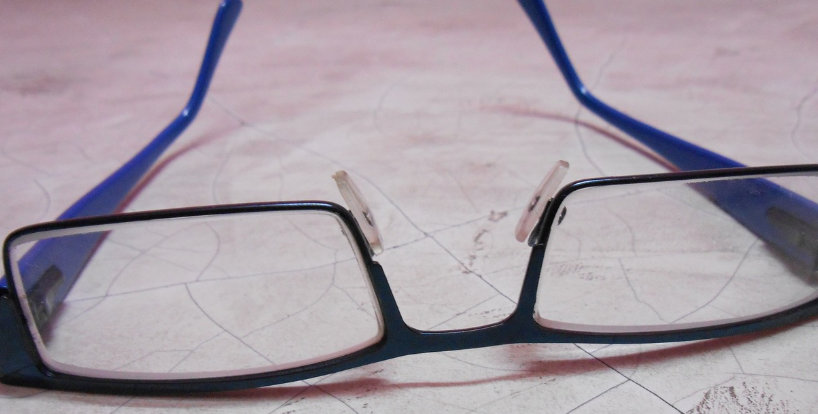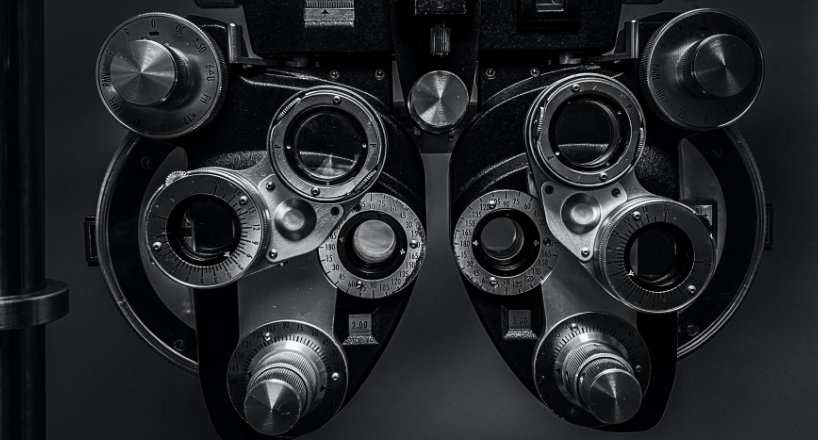Glaucoma

What is Glaucoma?
Glaucoma is a group of eye diseases that damage the optic nerve, which connects the eye to the brain and carries images from the retina to the brain. Glaucoma is usually caused by a buildup of fluid pressure in the eye, which damages the delicate fibers of the optic nerve. If left untreated, glaucoma can lead to blindness.
Glaucoma is often referred to as the “silent thief of sight” because there are usually no early symptoms or warning signs. The disease often goes undetected until significant vision loss has occurred. There are two main types of glaucoma: open-angle glaucoma and angle-closure glaucoma.
Glaucoma is a leading cause of preventable vision loss and loss of sight in grownups in the United States and Canada and the second leading reason for loss of sight in the World.
Open-angle glaucoma is the most common form of the disease. It develops slowly over time and is characterized by a gradual increase in fluid pressure within the eye. This type of glaucoma often has no early symptoms and is usually detected during routine eye exams.
Angle-closure glaucoma is less common, but more serious. It occurs when the drainage angle in the eye is blocked, causing a sudden increase in fluid pressure. This type of glaucoma can cause severe eye pain, redness, and blurred vision.
Risk factors for developing glaucoma include age, family history, high pressure in the eye, and certain medical conditions such as diabetes, high blood pressure, and heart disease. People of African descent are also at higher risk for developing glaucoma.
Diagnosing glaucoma usually requires a comprehensive eye exam, including measuring eye pressure, examining the drainage angle, and checking the optic nerve for damage. Advanced imaging techniques such as optical coherence tomography (OCT) can also be used to help diagnose and monitor the progression of glaucoma.
Treatment for glaucoma typically involves medications, such as eye drops, to lower fluid pressure in the eye. In some cases, laser or surgical procedures may be necessary to relieve fluid buildup and prevent further damage to the optic nerve.

Risk Factors
The risk factors for glaucoma include:
- Age: People over the age of 60 are at higher risk for developing glaucoma.
- Family history: If someone in your family has glaucoma, you are at higher risk of developing the disease.
- High intraocular pressure: People with higher-than-normal pressure in the eye are at higher risk for developing glaucoma.
- Ethnicity: African Americans are at higher risk for developing glaucoma, particularly the type of glaucoma known as primary angle-closure glaucoma.
- Medical conditions: Certain medical conditions, such as diabetes, high blood pressure, and heart disease, increase the risk of developing glaucoma.
- Near-sightedness: People who are nearsighted are at higher risk of developing glaucoma.
- Eye injury: A history of eye injury can increase the risk of developing glaucoma.
- Steroid use: Long-term use of corticosteroid medications can increase the risk of developing glaucoma.
It is important to note that having one or more risk factors does not necessarily mean that someone will develop glaucoma. Regular eye exams can help detect the disease early and prevent vision loss.
Understanding Glaucoma
Signs and Symptoms of Glaucoma:
The signs and symptoms of glaucoma can vary depending on the type of glaucoma and its progression. The most common form, open-angle glaucoma, often has no early symptoms and is usually detected during routine eye exams. Angle-closure glaucoma can cause severe eye pain, redness, and blurred vision. In advanced cases of glaucoma, people may experience a gradual loss of peripheral vision, which can lead to tunnel vision. Regular eye exams are important to detect glaucoma early and prevent vision loss.
Types of Glaucoma:
Glaucoma is a group of eye diseases that damage the optic nerve and can lead to vision loss.
Diagnosis and Treatment of Glaucoma:
Early detection and treatment are crucial in preventing vision loss from glaucoma, which is why it is important to understand the methods for diagnosing and managing this eye disease.
Signs and Symptoms of Glaucoma

The intraocular pressure caused by glaucoma can slowly harm the optic nerve, causing a steady loss of vision. Vision loss begins with peripheral (side) vision, leading to limited tunnel vision. With time if left unattended, main vision will likewise be impacted which will increase till it eventually causes total blindness. Sadly, any vision that is lost from the optic nerve damage can not be restored.
What are the Symptoms?
Generally, glaucoma sets in with no signs. At the early beginning of the most typical kind of glaucoma “open angle” glaucoma, vision remains normal and there is no discomfort or discomfort. This is why the disease is nicknamed the “sneak burglar of sight”.
An acute type of glaucoma, called angle-closure glaucoma, can present sudden symptoms such as foggy, blurred vision, halos around lights, eye pain, headache and even queasiness. This is a medical emergency situation and should be assessed instantly as the intraocular pressure can become very high and trigger permanent damage within hours.
Types of Glaucoma
The primary kinds of glaucoma are open-angle and narrow-angle, with open-angle being the most common type.
Primary open-angle glaucoma (POAG)
POAG slowly progresses without pain or visible vision loss initially affecting peripheral vision. By the time visual symptoms appear, irreversible damage has usually occurred, however, the quicker treatment starts the more vision loss can be prevented. When without treatment, vision loss will ultimately result in overall loss of side vision (or one-track mind) and ultimately overall vision loss.
Normal-tension glaucoma or low-tension glaucoma
This is another form of open-angle glaucoma in which the intraocular pressure stays within the typical level. The cause of this kind of glaucoma is not known, however it is believed to have something to do with inadequate blood circulation to the optic nerve, causing damage. People of Japanese descent, ladies and those with a history of vascular illness or low blood pressure are at greater risk.

Angle-closure glaucoma
Intense angle-closure glaucoma is marked by a sudden boost in eye pressure, which can cause severe pain, blurred vision, halos, queasiness, and headaches. The pressure is caused by a blockage in the fluid at the front of the eye which is a medical emergency situation and must be treated right away. Without prompt treatment to clear the blockage vision can be permanently los
Congenital glaucoma
The acquired kind of the disease that exists at birth. In these cases, infants are born with a defect that slows the regular drainage of fluid out of the eye; they are generally detected by the time they turn one. There are usually some obvious symptoms such as excessive tearing, cloudiness or haziness of the eyes, large or protruding eyes or light level of sensitivity. Surgery is normally performed, with a really high success rate, to bring back full vision.
Secondary glaucomas
Glaucoma can develop as a problem of eye surgical treatments, injuries or other medical conditions such as cataracts, growths, or a condition called uveitis which triggers swelling. Unchecked hypertension or diabetes can result in another serious kind called neovascular glaucoma.
Pigmentary glaucoma
A rare kind of glaucoma, this takes place when pigment from the iris sheds and obstructs the drainage of fluid from the eye leading to swelling and damage to the eye and drainage system.
Treatment of glaucoma is dependent upon the severity and kind of glaucoma present.
Glaucoma Diagnosis and Treatment
Spotting Glaucoma
During a regular detailed eye examination to look for glaucoma, your optometrist will dilate your eye to examine the optic nerve for indications of glaucoma and will likewise determine the intraocular pressure (IOP) with an instrument called a tonometer.
IOP Measurement
Tonometry involves numbing the eye with drops and after that carefully continuing the surface area of the eye to measure the pressure. Because your IOP can change throughout the day and glaucoma can exist without elevated IOP this is inadequate to rule out the illness. If there are signs of the illness, further screening will be performed.

Visual Field Test
A visual field test is created to find any blind areas in your peripheral or side field of vision. You will be asked to position your head in front of a machine while looking ahead and suggest when you see a signal in your peripheral field of view.
Retina Testing
Your medical professional may likewise measure the density of the cornea with an ultrasonic wave instrument in a test called pachymetry or usage imaging strategies such as digital retina scanning or optical coherence tomography (OCT) to develop an image of your optic nerve to look for glaucoma damage.
Treating Glaucoma
Treatment for glaucoma depends on the type and seriousness of the illness and can include medication such as eye drops or tablets or laser or conventional surgery.
Medication
Medication and drops to decrease IOP are frequently the first resort for controlling pressure-related glaucoma. These drops might have some uncomfortable adverse effects, however compliance with the treatment strategy is necessary for maintaining vision and halting the progression of the disease.
Surgery
Surgery are created to control the flow of fluids through the eye by either reducing the amount of fluid produced or enhancing the drain. Your physician might decide that a mix of surgery and medication will be the most reliable in numerous cases.
Prevention
It is important for people to have regular eye exams, especially as they get older or have a family history of glaucoma, to detect and treat the disease as early as possible. Early detection and treatment can help prevent vision loss and preserve sight.
In conclusion, glaucoma is a serious eye disease that can cause blindness if left untreated. It is important to have regular eye exams and to be aware of risk factors such as age, family history, and certain medical conditions. Early detection and treatment can help prevent vision loss and preserve sight.